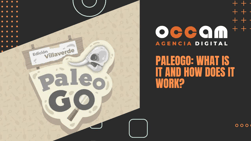Index Content
Street marketing impacts the public with eye-catching and original advertising campaigns on the street
The purpose of marketing, in essence, is to draw people's attention to a product, a company, a cultural work, etc. To achieve this, original strategies are often required to create an impact on society and, thus, increase the effectiveness of the campaign. Well, one of the best ways to achieve this is through street marketing.
This is a set of techniques located on public streets that generate an attractive visual impact and an experience with the user during a specific period. In other words, street marketing promotes interaction with passers-by so that they generate an emotional link with the brand and feel part of it. This strategy is likely to capture the public's attention and, therefore, to go viral on social networks, going from being a local campaign to a universal one.
It should be noted that this concept is closely related to two other strategies with which it should not be confused. One is guerrilla marketing, a commitment to creative and unconventional campaigns that does not necessarily have to be developed on the street. In this way, street marketing could be considered an aspect of guerrilla marketing. The other is ambient marketing. In this case, it is not exclusive to the street either, but when it is found in this environment it can create confusion. The difference is that street marketing modifies the space or adds new elements, while ambient marketing takes advantage of the layout of the environment to launch the message in a more subtle way.
Advantages of street marketing
There are several benefits for the brand when using this strategy. Let's see what they are:
- it is economically viable: street marketing offers a budgetary flexibility that traditional campaigns do not. Therefore, depending on the idea or the development time, it can be accessible to small and large brands.
- it adds value and visibility to the brand. In addition to reinforcing the brand image by getting closer to users, street marketing opens up the possibility of dialogue about the product or the campaign itself.
- it has a direct impact on the public: engaging with the public to generate a pleasant experience makes it easier for the brand to remain in their memory.
- it generates interest. The element of surprise, intrinsic to street marketing, arouses curiosity in most passers-by, and if they don't want to actively participate, they will certainly turn their heads or approach the campaign.
10 examples that demonstrate its effectiveness
- kitKat
The chocolate brand used its "Take a break, have a KitKat" campaign to place a bench in the middle of the street. If passers-by sat down for a minute, they received a packet of KitKat as a free gift. The idea was to promote relaxation in a fleeting time when rushing is the driving force behind all our actions.
- sprite
These soft drinks installed (water) showers for bathers on several Brazilian beaches to cope with the heat (and the sand). The structure was shaped like a vending machine with the brand name on it, thus satisfying a need of the people while promoting the product. Their slogan was: "Refresh your ideas".
- ikea
The company specialising in home furnishings placed furniture on the streets of Manhattan for five days, including portable sofas, dog water bowls and chairs with their corresponding tables. Of course, everyone had access to them. An ambitious campaign with a wide reach. The slogan was: "Good design can make everyday life a little better".
- Snickers
Here we find a street marketing campaign designed by a second year student of Graphic Design and Visual Communication for this other chocolate brand. Under the slogan "It's not you when you're hungry", they placed small boxes that encouraged people to "break the glass in case of emergency". As it couldn't be otherwise, inside was a Snickers bar.
- Volkswagen
This is a clear strategy aimed at boosting brand image rather than promoting a specific product. The fun theory" had a clear objective: to encourage users to walk up and down the stairs instead of using escalators. And it did so by designing a mechanism so that every time someone stepped on a step, a musical note would sound.
- donttakethisthewrongway
This design studio placed small mats on various lamp posts in New York to eliminate stress. They considered it "a healthy place for frustrations" where passers-by could hit this kind of punching bag without breaking anything. An original, simple and eye-catching strategy.
The design studio donttakethisthewrongway has installed punching bags on some lampposts, inviting New Yorkers to vent their anger and frustrations in a healthy way without hurting anyone#designthinking #Streetmarketing #Guerrillamarketing pic.twitter.com/RhiMPsnCvB
- Alberto M. (@albertommoral) May 29, 2019
- Samsung
The tech company announced the launch of the Galaxy Z Flip 4 model by modifying the structure of the benches at bus stops. In this way, it added full-size mobiles with its same mechanism, as users could lift the lid and sit down.
NEW SAMSUNG💥 CAMPAIGN
- Antonio J. Padrón (@AntonioJPadron) September 19, 2022
👉 #Samsung announcing the new Galaxy Z flip 4 model
👉 It's a sample of how to get attention with a good ambient marketing using a bus stop #marketing #advertising #seo #sem #streetmarketing #design #ads pic.twitter.com/ENnyToSVw8
- KFC
The food company placed several "KFC Autos" or "battered" cars on Spanish streets with the brand's name drawn on them. The campaign encouraged people to find them and give them "two strips of chicken with real batter". A campaign, both brand and product, that calls directly to action.
Here's what we're going to do: if you stop by any KFC Auto with a battered car and the letters KFC painted on it, we'll give you two strips of chicken with the real batter. No joke. Restaurants have been warned. pic.twitter.com/Me5T8yk84n
- KFC (@KFC_UK) March 15, 2022
- HBO
The streaming platform placed melting bus stop posters near bus stops in São Paulo (Brazil) to promote the series The House of the Dragon. Once again, an original idea connected through fire with the audiovisual work.
The melting bus stop poster was installed by HBO Brazil on the streets of São Paulo to promote the launch of House of the Dragon (or A Casa do Dragão), and it's already lighting up the internet.#HBO #Houseofdragons #streetmarketing #billboard #creativemarketing pic.twitter.com/wITLbCptZO
- Ercess Live (@ErcessLive) September 23, 2022
- FIFA
Finally, we find these billboards for a new video game for the PlayStation that might seem conventional, but are not because of one detail: they generate a 3D image by joining the canvas, the figure of the footballer and the ball in different dimensions.
Unconventional billboard coming back. Great #streetmarketing 🔥 #FIFA23 pic.twitter.com/I4pcBUkb9B
- Damiano Cori (@DamianoCori) October 3, 2022
Tips for implementation
Street marketing brings with it some challenges that need to be overcome in order to get the campaign off the ground, so keep these tips in mind when designing your strategy:
- don't annoy the public- the last thing that should happen with a marketing campaign that aims to delight the public is to create discomfort, so don't create an invasive campaign that might annoy those who aren't interested.
- establish the right location: Related to the previous point, make sure you choose the right space, taking into account the audience you want to target or the size of the campaign.
- find out about the town planning regulations. It is compulsory to respect the municipal rules of the street and to adapt the campaign to their requirements.
- spread the campaign: street marketing boosts local advertising, but if you make an effort to share it on social networks and encourage its virality, you can reach more people.





